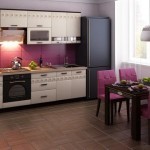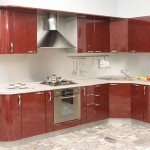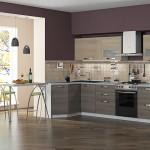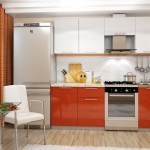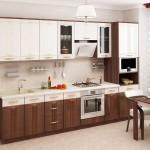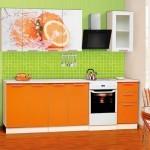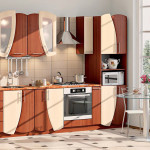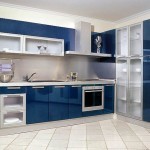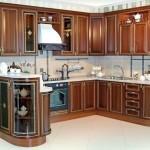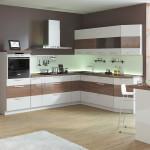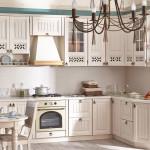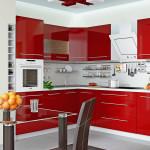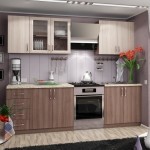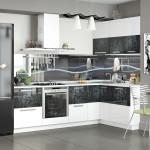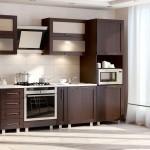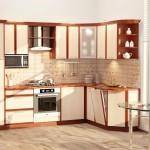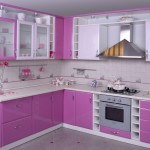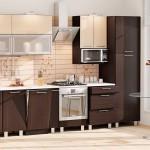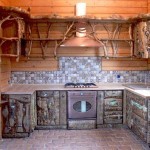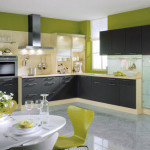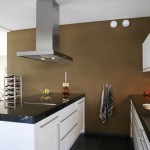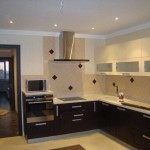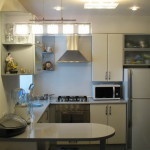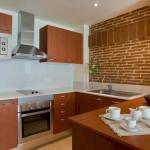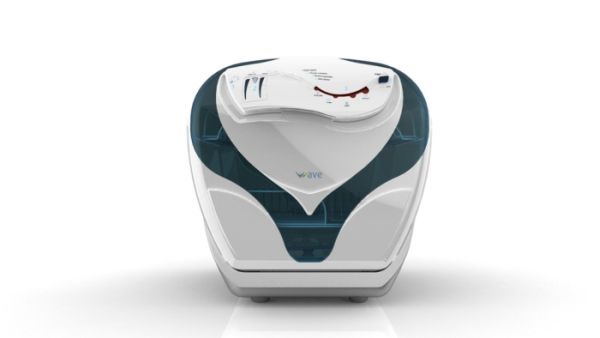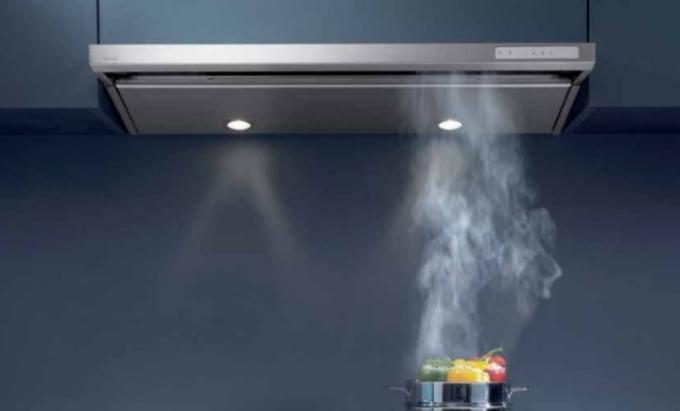Content
-
1 Hood types
- 1.1 By the principle of action
- 1.2 By form and method of installation
-
2 Six features of built-in hoods
- 2.1 Power
- 2.2 Number of speeds
- 2.3 Noise level
- 2.4 Filters
- 2.5 Control
- 2.6 Lighting
- 3 Additional tips for choosing
- 4 Installation tips
- 5 Conclusion
- 6 Gallery
The built-in kitchen hood has earned immense popularity due to its compact size and the ability to organically fit into any interior. What are the types of built-in structures, what is their principle of operation and how to choose the right size of the structure? We will consider all these points in more detail in our material.
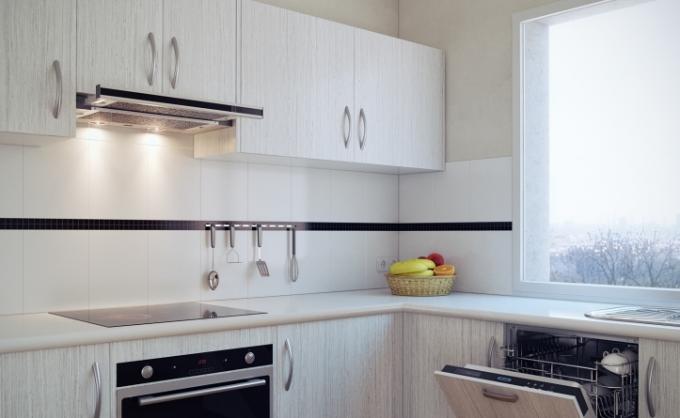
Built-in models are compact and clean the air well
Hood types
Before you start choosing a kitchen hood, you need to decide on the tasks that it should perform. The main purpose of such structures is to remove odors that arise during the cooking process, to cleanse the air from particles of fat and soot.
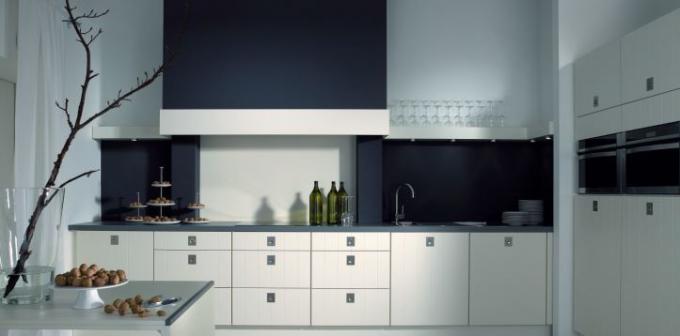
The main functions of the hood are to remove the smell of cooking food from the kitchen and eliminate soot and grease particles
By the principle of action
According to the principle of operation, such household appliances are divided into two groups:
- Recirculating. As the name implies, recirculation hoods draw air through them and return it back to the kitchen. The filter systems of these devices do a good job of cleaning the air from grease and fumes, but they do not always help to solve the problem of odors. Since the filter life is not infinite, they must be changed regularly. Recirculation models are installed when it is not possible to install exhaust ventilation.
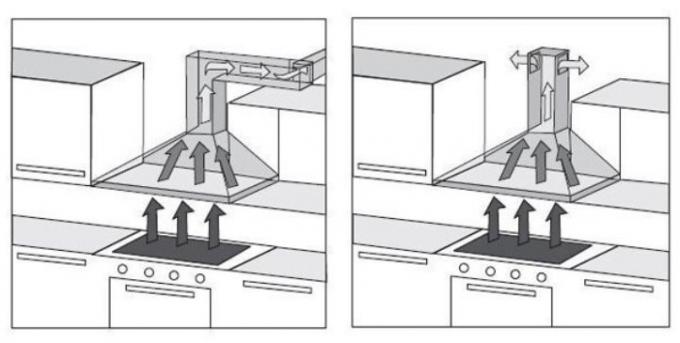
The photo shows the principle of operation of recirculation and flow hoods.
- Flowing. Such designs remove polluted air into the general ventilation system through a special outlet. Thus, these units not only eliminate combustion products and fat particles invisible to the human eye, but also promote air circulation and renewal in the room.
When connecting the hood duct to the ventilation hole in the kitchen, remember that in this case the ventilation in the kitchen will only function when the hood is on.
By form and method of installation
A wide range of modern designs offers many models that differ not only in the principle of their work, but also in their shapes, as well as in the method of their fastening.
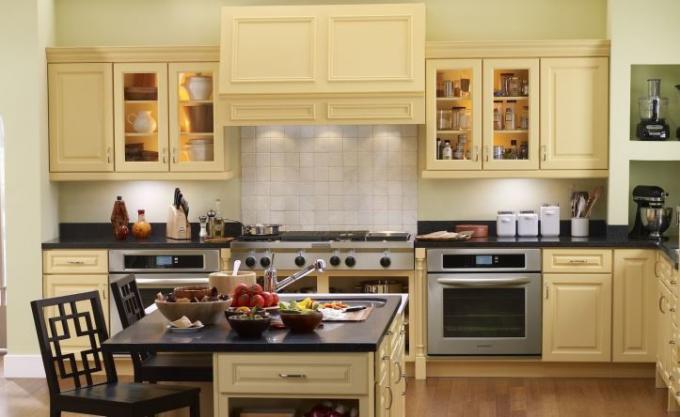
Structures differ among themselves not only in shape, but in the method of fastening, the principle of operation and power
The most popular options are:
- Suspended. Hanging hoods for the kitchen They are attached to the kitchen cabinet or directly to the wall above the stove, they require very little installation space and are often seen in very small kitchens. They, in turn, are divided into inclined, flat, domed and angular models.
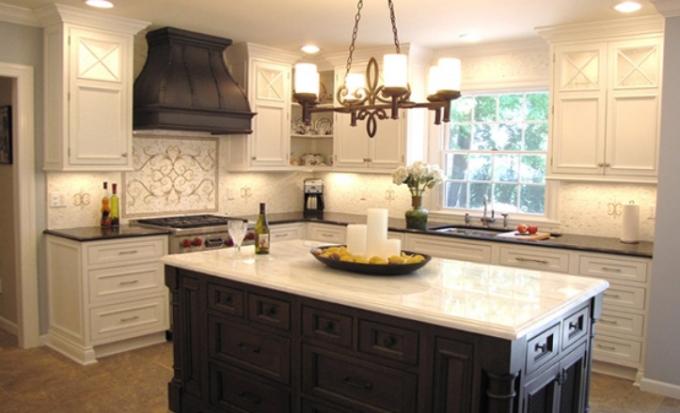
Dome options are the largest option among pendant devices, but their price is also appropriate
The main disadvantage of suspended structures is that they have low power.
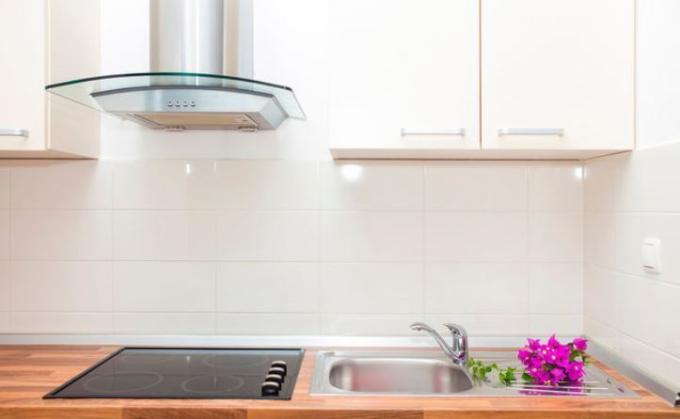
Pendant models are compact, but not particularly powerful
- Island. They are fixed on the wall or ceiling (most often above the kitchen island). They are quite cumbersome, therefore, when choosing such a design, you must carefully consider its appearance, try to fit it into the overall design of the room.

The island structure can be installed anywhere
- Embedded. Built-in kitchen hoods, like all built-in appliances, are mounted in a kitchen cabinet in such a way that a small part of the unit is visible. They do not take up much space, are easy to use and practical. Therefore, we will consider this type of hood in more detail.
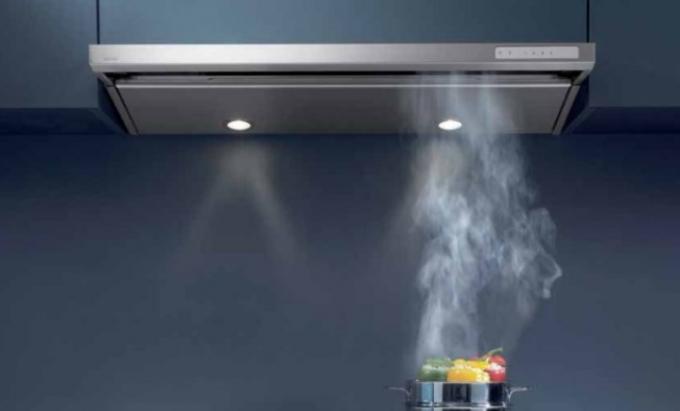
Embedded options take up a minimum of usable space
Six features of built-in hoods
The built-in kitchen hood is installed in a special cabinet located above the hob. This is very convenient, since it is possible to push the hood screen back into the cabinet after cooking. The pull-out panel increases the area from which air is drawn in. This ensures clean air in the kitchen when cooking.

Pull-out panel increases the air intake area
The compact design of the built-in units is pleasing to the eye and saves valuable space in the kitchen. In addition, the built-in hood in the kitchen is characterized by high performance and fairly quiet operation.
The fully recessed cooker hood is installed in a special box made in the same design as the entire furniture set. Therefore, you can select a suitable hood based solely on its technical parameters and characteristics, and not on its appearance.
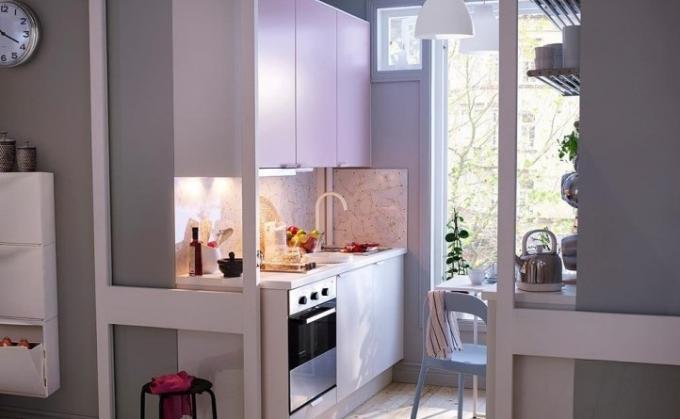
Built-in models hide in the closet and do not knock out of the interior at all
When choosing a retractable fully recessed structure, you must pay attention to:
- performance (power);
- number of speeds;
- noise level;
- applied filters;
- control options.

Devices may differ in power, control method, operating noise level, filters used
Let's look at all of these parameters in more detail.
Power
When choosing a built-in device, it is necessary to calculate the required power. This indicator directly depends on the size of the room, the air of which must be purified.
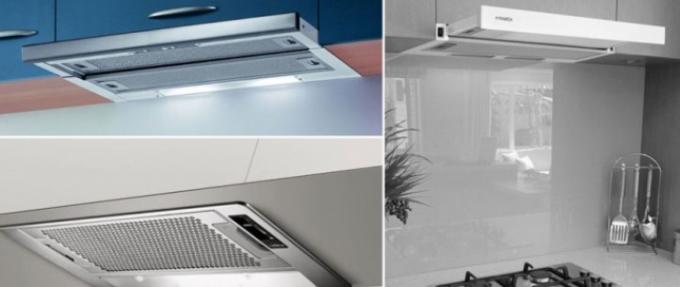
The low power of the unit will not cope with all the flavors present in the kitchen
With a weak, low-power hood in a large kitchen, its work will be useless. For the effective operation of the device, its power must be such that, in an hour of operation, the hood can purify an amount of air equal to ten times the volume of the room.

To calculate the required power, multiply the kitchen area by the height and then multiply by 10
Calculation of the required power. It is quite simple to carry out the necessary calculations: we multiply the kitchen area by the height and multiply by 10. This is the volume of air that the hood you need should clean. Experts recommend taking a hood with a one and a half capacity reserve.
Number of speeds
Most of the built-in units have several operating speeds. The most popular are models with three and four speeds.
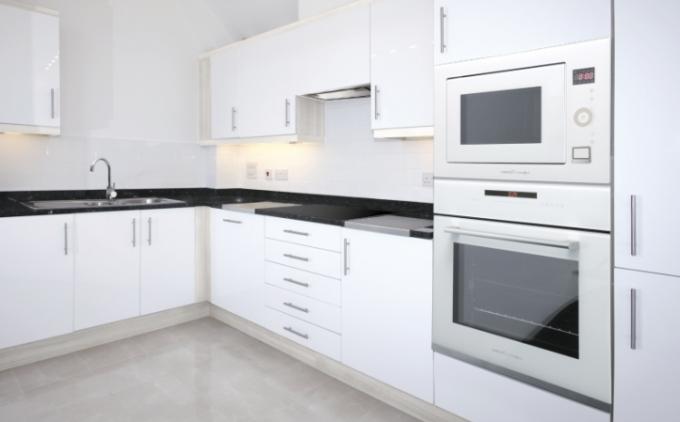
Most popular models have at least 3-4 speeds
The ability to switch speeds helps to regulate the suction speed of the hood of fumes and smoke. Almost all of the modern models of built-in hoods have one, but powerful enough motor, with the help of which the work takes place.
But there are already advanced models that are equipped with two motors, which makes their work more efficient and reliable.

The presence of two motors makes the hood more efficient and reliable
Noise level
As you know, the noise level is measured in decibels. The instructions, which must be attached to each hood, reflect all its technical parameters, including the maximum noise level of a particular model.
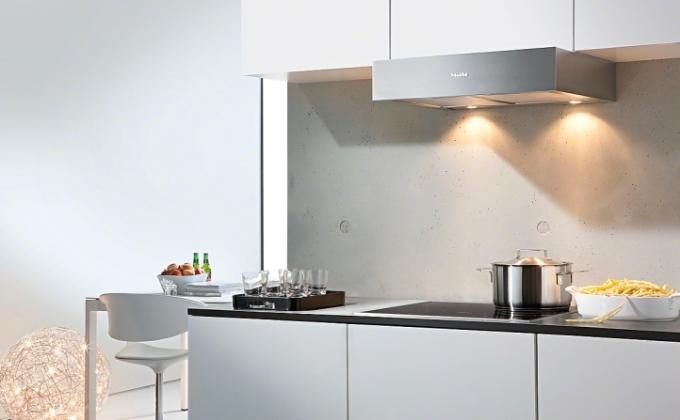
The noise level during operation is another important indicator that you should pay attention to
To understand the noise level versus decibels, we give the following guidelines:
- 30 decibels - noise level in a quiet room;
- 40 decibels - the noise level in a room with soft music;
- 50 decibels - noise in the restaurant hall with open windows;
- 60 decibels - the average level of noise when a person speaks at a distance of 1 meter;
- 70 decibels - noise inside the tram car;
- 80 decibels - noise inside the typing office;
- 130 decibels - the limit for a person, pain threshold.
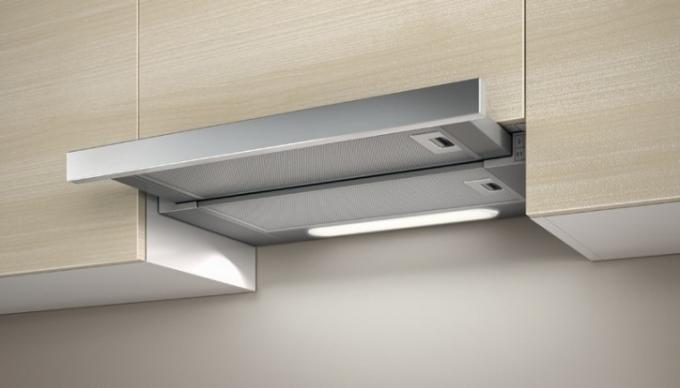
It is best to give preference to models whose noise level does not exceed 60 decibels
It is bad if the noise level produced by the hood during its operation exceeds 60 decibels. So try to choose a device with a lower value.
Filters
A very important element of a cooker hood is a filter. They are available in two versions:
- Fat trapping. They, in turn, can be divided into synthetic (requiring periodic replacement) and aluminum (not replaceable). Absorbers made of aluminum should be washed periodically, about once every three months, with warm water and detergents or in a dishwasher.

Grease filters require periodic replacement
- Coal. Designed to combat kitchen odors, change as needed. But such filters are usually not included in the standard set of the built-in hood. They are used in air recirculation mode, and built-in hoods are usually flow-through.
Control
Modern built-in hoods have state-of-the-art controls. There are several systems that allow for the management process:
- sensory;
- slider;
- push-button;
- slider.
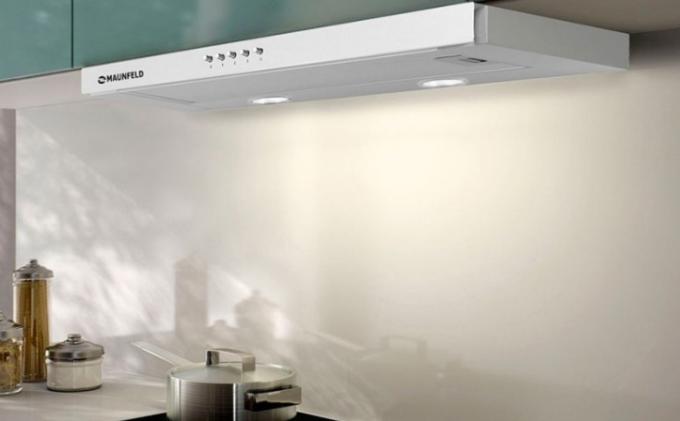
The unit can be controlled by touch, push-button, slider or slide
Lighting
High-quality illumination of the working area allows you to turn cooking into a convenient and comfortable process. The design of modern embedded models allows us to solve this problem too.
Built-in models can be equipped with different types of lighting:
- incandescent lamps;
- fluorescent lamps;
- halogen lamps.
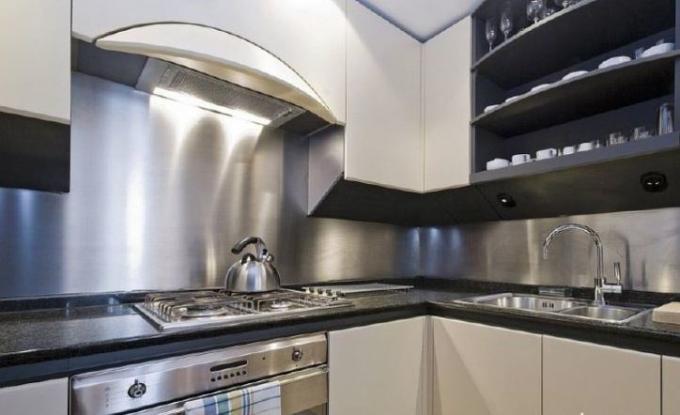
It is possible to illuminate the structure with incandescent lamps, fluorescent lamps or halogen lamps
The most effective are halogen lamps. They are more expensive than others, but consume much less electricity and have better lighting efficiency.
There are models of hoods with the ability to focus lighting at a certain point, with the ability to change the intensity of the light flux. Some modern hoods are equipped with motion sensors and begin to shine brighter when a person approaches.
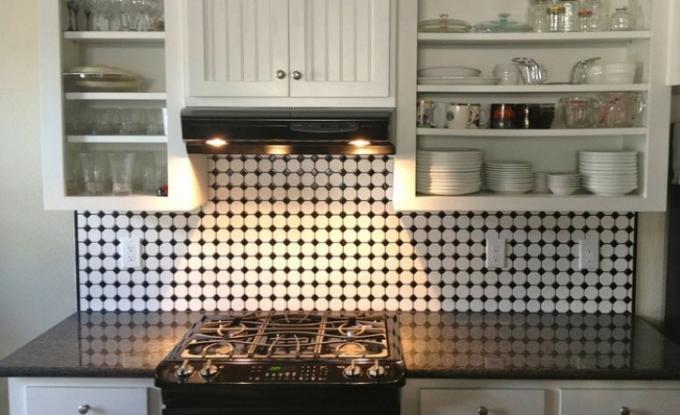
The better the lighting of the appliance, the more comfortable the cooking process will be.
Additional tips for choosing
It is best to choose combined built-in appliances that have two modes:
- air outlet to duct outside the premises;
- recirculation using carbon filters.

The size of the appliance directly depends on the size of the kitchen and stove.
In addition, it is worth paying sufficient attention to the size of the unit. For example:
- For a small kitchen. Built-in kitchen hoods 50 cm are perfect. Such models are enough to remove unpleasant odors and fumes from hobs with a width of 45 cm and 50 cm.
- For a small room. Unlike hanging-type hoods, built-in hoods for a 60 cm wide kitchen take up much less space, but at the same time very effectively purify the air. Another advantage that 60 cm built-in kitchen hoods have is their almost completely silent operation, which cannot be said about free-standing models.
- For a spacious kitchen. Built-in kitchen hoods of 90 cm are suitable, which have a very high performance. They do a great job of cleaning the air in large kitchens and studios. Such designs are suitable for the working surface of the slab from 70 cm to 90 cm.

For small spaces, it is best to give preference to models with a length of 60 centimeters
It should be remembered that the surface of the hob or stove must be completely covered by the working plane of the built-in unit. Do not install 60 cm or 50 cm appliances over a 70 cm wide slab.
Installation tips
The built-in hood is connected to the ventilation shaft in the house using a corrugated hose or a special plastic duct. Remember that the diameter of the duct must not be narrowed in any way.

This is how the hood built into the cabinet looks like.
You cannot lead the air duct with a pipe with a diameter of 150 mm, and then go through the adapter to a diameter of 100 mm.
Only the opposite solution is possible. When constructing an air duct with your own hands, make sure that the corrugated pipe does not jam anywhere and does not create obstacles to the passage of air. For more detailed instructions, see the video in this article.
Conclusion
Built-in hoods are becoming more and more popular every day. We told you about their power, control methods, lighting and noise level emitted during operation. With this information, it will be easier for you to make your choice and find the model that is ideal for your apartment.


